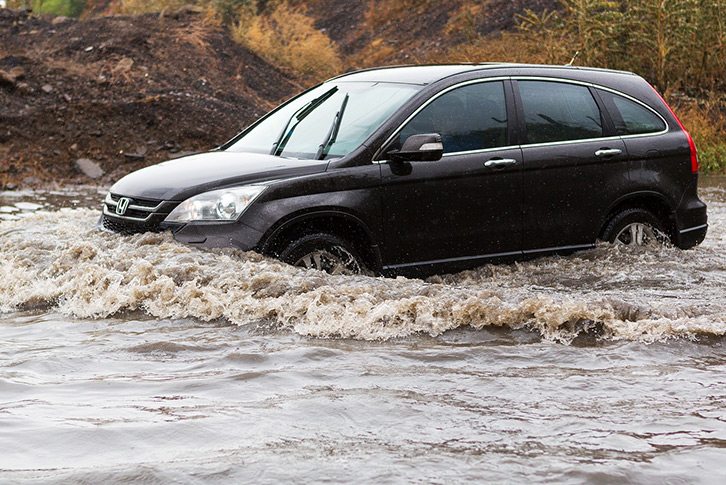Following this highly active hurricane season, there will surely be unscrupulous sellers looking to knowingly unload flood vehicles. Here are a few tips of what to look out for.
During Hurricane Harvey alone, an estimated 500,000 cars were damaged, and while most will rightfully end up as insurance write-offs in junkyards, some flood vehicles could make it onto the used car market.
The good news is that there are usually some easy ways to identify flood vehicles. If you're looking to buy a used car coming out of the southeast anytime soon, here are several ways to do your homework to avoid buying a flood vehicle.
Check the History
As is the case with the purchase of any used car, the first step should always be to check the vehicle history report, such as CarFax or AutoCheck.
Any car that suffers any major damage due to flooding will definitely have this history show up on a history report, but not all cars will be reported through insurance.
For these cars, the history report will still show where the car was located during storms, which will help determine how much extra investigating you should do.
Use Your Senses
A simple inspection of a car can sometimes help reveal hidden secrets about the car. A moldy or musty odor from the car reveals that standing water is or was present in the car; foggy windows are also a dead giveaway.
Feeling around under the seats and in the corners of the trunk for wet carpet can help pinpoint any source of water. It can be a simple unaddressed water leak, but too much moisture shows that a lot of water made its way into the cabin.
Dirt in Odd Places
When a car is submerged under water, debris such as dirt, mud and leaves can get into nooks and crannies that should otherwise be clean... unless it's an off-road vehicle, of course.
Check out the undercarriage for such evidence paying close attention to higher up suspension components such as the shocks, but you can take this a step further by pulling up the carpet in the trunk and looking in the spare tire well.
Bizarre Issues
Water - especially salt water - can wreak havoc on electrical components causing them to behave strangely. If low-lying parts such as speakers or power seats don't work, that can indicate that water has damage these parts.
Also, small intermittent issues (like dash lights that cut out while driving) can be another hint about potential water damage.
Common Sense
Finally, if a deal is too good to be true, chances are it probably is. If someone is trying to unload or flip a flood car, it could be priced significantly lower than similar cars. If the seller tries to distract you or objects to such an inspection, chances are they are hiding something.
NEXT: THE 3 BEST FOUR WHEEL DRIVE CARS FOR UNDER $50,000




